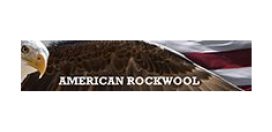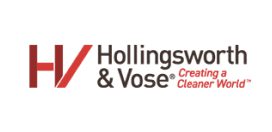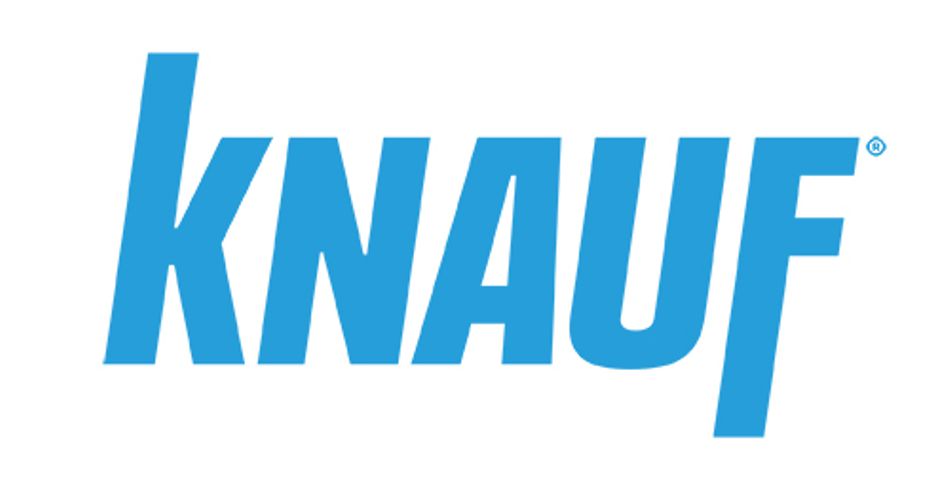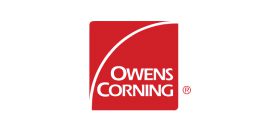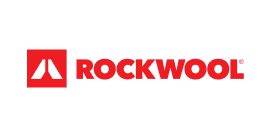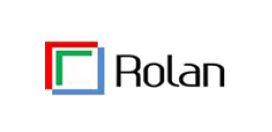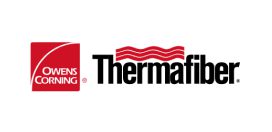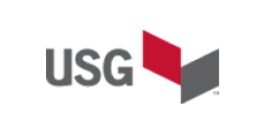Carbon Payback Scenario Analysis
–+ICF carried out an energy and carbon modelling study to analyze the potential use-phase emission reductions realized through the installation of building envelope insulation for residential and commercial new construction. The study focused on one residential prototype: single-family detached home, and six commercial prototypes: midrise apartment building, medium office, retail strip mall, primary school, secondary school, and warehouse.
Setting the Record Straight: Insulation and Low Carbon Buildings (N170)
–+This guide aims to correct misleading carbon claims made by some cellulose and wood fiber insulation manufacturers. It highlights why commonly available, cost-effective fiberglass insulation is among the best building materials for low-carbon construction. The guide contains data from recent reports that examine the carbon impacts of various insulation materials during the production stage, use phase, and considerations for the end-of-life cycle for insulation products. By offering transparency and accurate citations, the analysis presented here brings clarity to the topic.
Thermal Performance of Pipe Insulation: A Performance Degradation Comparison Study (C1228)
–+R & D Services conducted ASTM C335 thermal performance testing on fiberglass, mineral wool, and aerogel pipe insulation products. Testing showed that aerogel products experienced a reduction in thermal performance of as high as 20% under elevated temperatures. Fiberglass and mineral wool specimens experienced less than 2% thermal performance degradation.
Economic Evaluation of Building Insulation Measures for Grid Efficient Buildings (GEB)
–+Grid interactive efficient buildings are energy-efficient buildings with smart technologies to optimize energy use for grid services, occupant preferences, climate mitigation, and cost reductions in a continuous and integrated way. This report analyzes how insulation plays a role in GEBs.
Economic Evaluation of Building Insulation Measures
–+This analysis found that improved insulation levels can work together with Grid interactive efficient building technologies to achieve cost-effective peak savings, particularly within single-residential homes, where insulating to the thermal performance levels of the 2021 IECC would be cost effective and reduce peak demand in residential buildings when compared with insulating to the 2009 IECC.
A “How to Install Batt Insulation” Videos Series
–+Below are links to a three part video series showing the proper installation methods of fiberglass and rock wool batt insulation to meet RESNET Grade I requirements.
Helps to answer the question “How do I install batt insulation?”
- Video 1/3 – Pre-insulation Walk-Through
- Video 2/3 – Insulating Tips From the Pros
- Video 3/3 – Insulation Inspection
Brian Coble, Director of High Performance Homes for Advanced Energy walks viewers through an ENERGY STAR Home and points out every area of a home that must be insulated to meet RESNET Grade 1 Insulation Installation Requirements. Meeting specific energy efficiency criteria with fiberglass, rock wool and slag wool batt insulation can be easily achieved if the insulation and air sealing package is installed with professionalism and care. Additional energy efficiency measures that need to be performed prior to installing home insulation is also addressed.
A Comparison of Air Duct Systems Energy Savings And Acoustical Performance (AH109)
–+Summarizes research findings comparing acoustical and air leakage data in sealed and unsealed metal ducts, insulated and uninsulated ducts and fiberglass duct systems.
A Guide to Insulated HVAC Systems (AH121)
–+Covers the basics of fibrous glass air duct insulation (ductboard / duct board), its role in thermal and acoustical performance, and how it can contribute to indoor air quality.
Discusses fibrous glass ducts, liner and wrap insulation for sheet metal duct systems, and insulated flexible ducts. Describes features and benefits of each type of system; includes job-site checklists for inspectors and code officials.
A Performance Comparison of Today’s Environmental Home Builder & Renovation Projects – Canadian Market (NACA101)
–+This piece compares the most common insulation selection criteria for fiberglass insulation, cellulose insulation, mineral wool insulation, cotton insulation and spray foam insulation for the Canadian home building market. Comparison data includes information on thermal performance, fire safety, moisture absorption, settling, recycled content, product testing and more.
Acoustical Performance of Wall Cavity Insulation Products (BI507)
–+Summarizes research findings comparing the Sound Transmission Class (STC) and Outdoor/Indoor Transmission Class (OITC) values of wall assemblies insulated with unfaced fiberglass, mineral wool, open cell foam and closed cell foam.
The report concludes that the variation in results across wall assemblies using different insulation types was minimal.
ASHRAE 90.1 Compliance for Metal Buildings (MB304)
–+Helps the metal building designer meet the energy code requirements with fiberglass insulation systems that will meet the ASHRAE 90.1 Standard.
The booklet highlights ASHRAE’s minimum U-Value requirements for 234 U.S. cities and includes detailed construction drawings for several types of fiberglass insulation systems for metal building construction.
Attic Insulation Performance: Full Scale Tests of Conventional Insulation and Radiant Barriers (Executive Summary) (RP051)
–+This report documents the tests sponsored by the Mineral Insulation Manufacturers Association on methods for reducing summer and, to a limited extent, winter heat transfer through attics.
The tests, conducted in Ocala, FL during 1987-1988, investigated the comparative performance of radiant barriers and conventional fiberglass insulation in reducing the ceiling heat flows that result in loads on the air conditioning and heating systems.
Building Insulation: A Performance Comparison (BI502)
–+Today’s home builder is striving to construct a home that will minimize the impact on the environment and provide comfort, convenience and cost savings for the home owner.
This piece compares the most common insulation selection criteria for fiberglass insulation, cellulose insulation, rock and slag wool insulation, cotton insulation and spray foam insulation. Comparison data includes information on thermal performance, fire safety, moisture absorption, settling, recycled content, product testing and more.
Dispersal of Fungal Spores From Three Types of Air Handling System Duct Material (RP046)
–+Discusses exposure to airborne microorganisms in indoor environments may result in infectious disease or elicit an allergic or irritant response. (Mark P. Buttner, Patricia Cruz-Perez, Paula J. Garrett and Linda Stetzenbach)
Facts #11: Facts About Ventilation and Moisture Control (BI458)
–+Facts About Ventilation and Moisture Control – Includes information on attic ventilation, crawl space ventilation and vapor retarders.
Facts #14: Wet-Spray Cellulose Insulation Systems (BI460)
–+Discusses concerns about wet-spray cellulose and its effectiveness, including thermal performance, moisture control, air infiltration and corrosiveness.
Facts #15: Achieving Expected Thermal Performance (BI461)
–+Application of batts in high performance horizontal ceilings.
Facts #21: High-Performance Batts for Walls and Cathedral Ceilings Offer Energy and Money Saving Construction Alternatives (BI467)
–+This Fact Sheet looks at high-performance fiberglass batts, which can significantly improve the energy efficiency of walls and cathedral ceilings and achieve higher R-values without necessarily adding to the cost of building a home.
Facts #24: The Facts About Insulation And Air Infiltration (BI480)
–+Discusses the results of several studies which support the conclusion that insulation plays a very insignificant role in controlling air infiltration.
Facts #25: Glass Fiber Air Transmission Systems – The Benefits and Recommended Use of Fibrous Glass Duct Liner (AH106)
–+Addresses the performance characteristics, installation recommendations and locations where fibrous glass duct liner should not be used.
Facts #26: Facts About Moisture and Fiberglass Metal Building Insulation (MB306)
–+Contains recommendations on the use of vapor retarders in metal buildings and the replacement of insulation that has had contact with storm water.
Facts #28: Facts About Lamination Process Control and Thickness Recovery After Lamination (MB308)
–+Provides recommendations for laminators to help metal building insulation meet the stated R-value after lamination.
Facts #30: Insulation and Fire Safety (BI472)
–+In a Question and Answer format, discusses the performance benefits of NAIMA 202-96 certified insulation.
NAIMA metal Insulations are independently tested and certified to meet the rigid performance requirements needed for today’s energy efficient metal buildings.
Facts #31: Facts About Certified NAIMA 202-96® Insulation (MB305)
–+In a Question and Answer format, discusses the performance benefits of NAIMA 202-96 certified insulation.
NAIMA metal Insulations are independently tested and certified to meet the rigid performance requirements needed for today’s energy efficient metal buildings.
Facts #34: Glass Fiber Air Transmission Systems: The Facts About Mold Growth (AH113)
–+Describes the ASTM and UL181 test procedures which fiberglass air handling insulations are required to pass to ensure the products do not support mold growth.
Includes recommended procedures for proper maintenance of air transmission systems.
Facts #35: An Insulation Comparison (BI475)
–+Compares key performance characteristics of fiberglass and cellulose insulation including R-value per inch, moisture absorption, resistance to corrosion, weight, fire resistance, settling and product testing.
Facts #35: An Insulation Comparison (BI475FR) – French
–+French Language Version of Facts 35: Compares key performance characteristics of fiberglass and cellulose insulation including R-value per inch, moisture absorption, resistance to corrosion, weight, fire resistance, settling and product testing.
Comparaison entre les isolants à fibre de verre et les isolants cellulosiques.
Facts #39: Facts About The Impact of Duct Cleaning on Internal Duct Insulation (AH127)
–+Discusses the results of a research project designed to determine the effectiveness of three common HVAC duct cleaning methods used to clean the duct insulation surface.
Facts #50: Glass Fiber Air Transmission Systems: The Facts About Airborne Fibers (AH114)
–+Summarizes the results of a number of studies conducted over a period of twenty-five years that show that glass fiber erosion from the airstream surface of fiberglass duct insulations is insignificant.
Facts #54: Fire and Thermal Performance of Reflective Insulations in Metal Building Applications (MB313)
–+Analyzes and discusses the fire and thermal performance claims of reflective insulations used in metal building systems.
Facts #58: The Facts About the Acoustical Performance of Metal Building Insulation (MB315)
–+Metal Building insulation greatly reduces the level of both exterior and interior noise by preventing transmission of exterior sounds to the interior of the building absorbing reverberating sounds within the building.
This Fact Sheet discusses the fundamentals of acoustical performance and shows how to improve sound control in typical wall and roof assemblies through the use of fiberglass insulation.
Facts #61: Facts About the Performance of Reflective Bubble Pack Insulations in Duct System Applications (AH135)
–+This Fact Sheet analyzes and discusses the performance claims of reflective (bubble pack) insulations when used to insulate air duct systems and how the model codes govern these products.
Facts #64: Fibrous Glass Duct Systems (Ductboard / Duct Board) (AH137)
–+Discusses the specific uses, performance characteristics including thermal and acoustical, condensation control, leakage, reinforcement, closure, code compliance and insulation recommendations for fiberglass duct systems. (Ductboard / duct board)
Facts #65: Fibrous Glass Duct Liner (AH138)
–+Discusses the specific uses, performance characteristics, ASTM thermal and acoustical property requirements, and installation recommendations for fibrous glass duct liner.
Facts #66: Fibrous Glass Duct Wrap (AH139)
–+Discusses the specific uses, performance characteristics, fire safety, condensation control and installation recommendations for fibrous glass duct wrap.
Facts #67: Fibrous Glass Insulation Boards (AH140)
–+Discusses the specific uses, performance characteristics, fire safety, condensation control, personnel protection, and installation recommendations for fibrous glass commercial insulation boards.
Facts #72: Mineral Fiber Insulation Products for Commercial and Industrial Applications: The Facts About Mold Growth (CI217)
–+Contains recommendations regarding moisture issues with mineral fiber pipe insulation for commercial and industrial applications.
Facts #73: Moisture & Corrosion Performance of Cotton Duct Liner Materials in HVAC Ducts (AH145)
–+This Fact Sheet describes test results on cotton duct liner insulation conducted at the National Voluntary Laboratory Accreditation Program (NVLAP) certified laboratories.
Facts #80: Fiberglass and Rock Wool and Slag Wool Loose-Fill Insulation for Weatherization Assistance Programs (NAIMA043)
–+Fiberglass, rock wool and slag wool insulation qualify for use in the Weatherization Assistance Program. While there are several types of insulations typically used for the weatherization market, there are many advantages to loose-fill fiberglass or rock wool and slag wool insulation.
Facts #82: Mineral Fiber Insulation Products for Commercial and Industrial Applications: Codes and Standards for Insulation Used on Pipes (CI225)
–+This Fact Sheet addresses the importance of specifying commercial and industrial pipe insulation that meets prescribed codes and standards for quality and safety, and illustrates the consequences of using insulation that does not meet those standards.
Facts #83: Spray Foam Insulation Industry and Federal Agencies Agree On Product Stewardship Measures (N066)
–+This Fact Sheet discusses issues surrounding the safe use of spray foam insulation.
Facts #85: Facts About Insulation Requirements for Plastic Piping (CI226)
–+Discusses the thermal conductivity and heat transfer differences between plastic and metal piping systems and insulation considerations for domestic hot and cold service water systems and for HVAC systems in commercial and industrial buildings.
Facts #8: ASTM Standard Specifications for Mineral Fiber Blanket, Loose-fill and Spray-Applied Insulation (BI455)
–+Reviews ASTM Standard Specifications and performance requirements for mineral fiber blanket, loose-fill, and spray-applied insulation materials.
Facts #9: Facts About Fiberglass Loose-Fill Insulation (BI456)
–+Reviews performance, material, installation, inspection and R-value information with regard to fiberglass loose-fill insulation.
Fiberglass & Mineral Wool Insulation – Engineered to Outperform (N068)
–+Fiberglass and mineral wool insulation are installed in 90% of homes in North America. This fact-filled information piece provides information on the proven performance, installation productivity, versatility, proven manufacturing and installation safety, and the lifecycle sustainability of fiberglass and mineral wool insulation for homes. (N068)
Fiberglass HVAC Insulation – Know the Facts (12 Minute Presentation)
–+12 minute audio visual presentation on fiberglass insulation products designed for the HVAC system for residential and commercial buildings.
The presentation focuses on:
- The Benefits of Insulated Air Ducts
- Health & Safety Safety
- Mold Moisture & Cleanability
- Performance & Product Testing
- Codes & Standards
Fibrous Glass Duct Liner Standard (AH124)
–+This standard provides comprehensive and detailed information regarding the materials, accessories, specification, fabrication, installation, commissioning, maintenance and service life of fibrous glass duct liners.
Includes numerous informative illustrations. Third Edition, 2002.
Fiberglass HVAC Insulation – Know the Facts (12 Minute Presentation)
–+12 minute audio visual presentation on fiberglass insulation products designed for the HVAC system for residential and commercial buildings.
The presentation focuses on:
- The Benefits of Insulated Air Ducts
- Health & Safety Safety
- Mold Moisture & Cleanability
- Performance & Product Testing
- Codes & Standards
Fibrous Glass HVAC Duct Systems Proven Performance (AH100)
–+Reviews the benefits of and provides information on the broad range of proven performance characteristics of fibrous glass duct systems for both commercial and residential buildings. Includes duct board (ductboard), duct wrap, and duct liner.
Guide to Conducting a Short Form Insulation Audit (CI206)
–+Preliminary tool to explain the impact of adding or upgrading thermal insulation.
Kit includes easy-to-follow instructions, sample worksheets and audit forms for conducting an industry insulation audit.
How to Install Insulation: Video Series from California Energy Commission
–+NAIMA has worked with the California Energy Commission to produce the following “How To” videos for insulating ceilings and walls with fiberglass insulation.
How Your Ductwork Can Save Energy Dollars And Reduce Pollution (AH108)
–+Explains the energy saving benefits of fiberglass ducts in homes.
Includes fuel saving tips for heating and air conditioning systems.
Independent Reviews Discredit Colorado Study (RAC1768)
–+Independent reviews of a 1990 study from the University of Colorado at Denver (“Colorado Study”) have found the study flawed in its conclusions of superior performance for cellulose insulation.
Insulation Facts #32: A Guide To Selecting Fiberglass Insulation Products For New Home Construction And Remodeling (BI473)
–+This fact sheet guides the reader in selecting fiberglass insulation products for home construction and remodeling.
Let’s Set the Record Straight (BI500)
–+This publication addresses independent research studies that demonstrate that the most effective thermal envelope system requires insulation and also a caulk, foam, taped building wrap, foam sheathing and/or gasket material to stop air movement through and around the external walls.
Provides details on the following issues:
- Insulation, of any type, is no substitute for proper sealing and prevention of air infiltration.
- “Skimming” the wall cavity with spray applied insulation is not enough to stop all air infiltration
- Maximizing home insulation and minimizing air infiltration are two separate issues.
- Spray foam insulation is not a one step solution to air leakage.
- R-value is not a gauge for air infiltration.
Maximum Thickness Restrictions for Spray Foam (RP067)
–+This article contains a detailed explanation of thickness restrictions for spray foam insulation.
The reader will also learn about spontaneous combustion and “advice to prudent builders”. Reprint from Energy Design Update April 2008.
NAIMA 202-96® (Rev. 2000) Standard For Flexible Fiberglass Insulation to be Laminated for Use in Metal Buildings (MB311)
–+NAIMA metal building insulation manufacturers subscribe to this voluntary standard for flexible fiberglass insulations to assure the R-value is maintained after lamination.
The voluntary standard is a valuable product specification tool for manufacturers, designers and users of metal building insulation systems.
NAIMA Fibrous Glass Duct Construction Standards Inspection Checklist (AH102)
–+An inspection checklist for fibrous glass duct board system installation.
NAIMA R-Value Certification Program Frequently Asked Questions
–+Learn more about the NAIMA R-Value Certification program and the frequently asked questions associated with the program.
Noise Control: Sound Advice for Today’s Families (BI476)
–+The benefits of insulation when used for acoustic application and design consideration for homeowners concerned with noise in their homes.
Pictorial Guide on Installing Batt Insulation — Installation Tech Tips
–+Homes insulated with fiberglass or rock wool batt insulation can meet the RESNET Grade 1 installation requirements by fitting and filling all cavities, and carefully insulating all around obstacles such as electrical boxes, recessed lighting, wires and cables, piping, exhaust fans and duct connectors. This pictorial guide shows insulating tips on cutting and fitting insulation batts into places like under stairways, around fireplaces, tubs and showers, and band joists and how to check for compression, gaps, voids or misalignments and more.
Pictorial Guide on Installing Batt Insulation — The Critical Details
–+Insulating homes to the latest energy codes requires care and attention to detail to maximize efficiency and year round comfort. See how professionals insulate attic hatches, ceilings with and without attics, roof decks, around ventilation baffles and chutes, floors and knee walls with fiberglass and rock wool batt insulation.
Questions and Answers About Home Insulation (BI409)
–+An easy-to-use booklet which provides basic information on insulation and tips to help save on heating and cooling bills.
Excellent guide for homeowners.
Requirements for Listing UL 181A Closure Systems (AH105)
–+Describes the rigorous UL 181A tests that tapes with the Underwriters Laboratories (UL) label undergo to ensure proper fiberglass duct closure.
Settling Testing Results-Fiberglass Friction Fit Batts (4162.029.111815B)
–+2015 testing results from Home Innovation Research Labs (HIRL) on wall insulation settling for kraft faced fiberglass friction fit batts.
Settling Testing Results-Blown in Fiberglass Insulation (4162.029.111815D)
–+2015 testing results from Home Innovation Research Labs (HIRL) on wall insulation settling for blown-in fiberglass insulation.
Settling Testing Results-Rock Wool Friction Fit Batts (4162.029.111815C)
–+2015 testing results from Home Innovation Research Labs (HIRL) on wall insulation settling for rock wool friction fit batts.
The Truth About Air Infiltration (BI499)
–+This brochure breaks down the myth that air infiltration and thermal protection are the same and can be treated with one solution.
Because a home should be thought of as a combination of integrated systems, optimal thermal protection for a home comes with proper air sealing and insulation.
Thermal Performance provides the Measure of Success for Most Insulation Applications (RP045)
–+Article by Chris Crall, Owens Corning addressing thermal insulation proven to be the effective method of reducing the owning and operating costs of metal buildings. Reprint from Metal Architecture.

